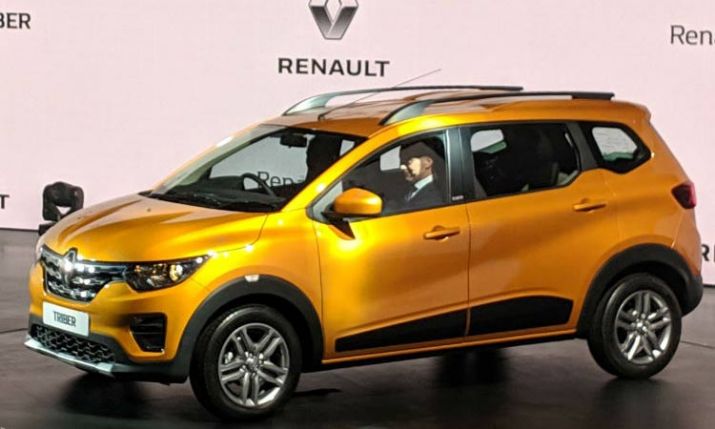Creating a Market Segment – The Renault India Case Study Report
Precis Statement
The French multinational automobile corporation, Renault, entered the Indian market in 2005 after its collaborative venture with the Indian automobile company, Mahindra and Mahindra (M&M). The first automobile of the partnership, Logan, became largely unsuccessful amongst the Indian customers. Renault’s repositioning of the brand accompanied with in-depth market research paved way to the launch of Duster, an upgraded Sport Utility Vehicle (SUV) that was originally launched by Dacia, Renault’s daughter company in Romania. The reimagined Duster took the Indian market by storm in 2012 and attained country-wide success. However, Renault continued to face stiff market competition from local and other international automobile brands. The company’s success in the Indian automobile market was challenged by other companies who launched vehicles of superior quality at relatively cheaper rates. Indian customers preferred the vehicles of other automobile companies that offered value-of-money by addressing the customers needs and demands. As a result, Renault expanded further into the market segment and manufactured the Kwid, a small SUV, in 2015. The vehicle became popular amongst the Indian customers as thousands of units were sold in the next three years. It enabled Renault to maintain a market share of 3.6% and inch closer to the company’s target of 5% share in the Indian automobile market. The unveiling of the Grand Duster in 2017 was intended to regain Renault’s competitive edge over those brands that had succeeded in overtaking the volume sales of Duster. According to the analysis of Messner and EjazChaudhary (2019), Renault’s roller-coaster business journey in India still faces a stern challenge in sustaining its success in the dynamic emerging market. There is an imminent need for Renault’s business thinktank to address this challenge effectively to sustain the company’s share in the Indian automobile market. Renault’s marketing management team must also be ready to make logical assumptions to evaluate long-term market conditions. Some of the vital missing information and assumptions are as follows:
- The ongoing COVID-19 pandemic has already incurred an economic loss worth trillions of dollars to most of the world’s countries (Duffin, 2020). Social distancing implications have cut down business dealings already. It is obvious to assume that once this epidemic subsides and the businesses resume, the Indian automobile industry will have suffered an enormous blow. Inflation rates will rise substantially, and it will heavily impact the volume sales of Renault, thereby causing a major blow to the company’s profitability.
- A long-term goal of the Indian government is to switch solely to electric vehicles (Equitymaster, 2020). Although this is not possible considering the buying power of Indian customers, it can be assumed that the shift towards hybrid vehicles would be highly anticipated, welcomed and facilitated by the Indian political administration.
- The Indian financial year 2020-21 is critical for the automobile industry as the sold vehicles must comply with the BS-VI emission regulations (Equitymaster, 2020). The automobile companies will have to be cautious in adhering to the emission policies. As a result, an increase in prices is expected for this financial year that can impact the Indian automobile industry.
- Product diversifications are likely to attract a particular segment of a huge Indian population of more than 1.32 billion people.
- In addition to the insufficient market research on the Indian customer base that comprises of various religious, social and ethnic groups, another missing link is the evaluation of the set of leadership skills that are highly regarded for accomplishing success in business dealings (Cappelli et al., 2010). These skills include envisioning and strategic planning, motivation and inspiration, accountability, careful selection of talent, developing a flexible organizational structure, and understand the market and its competitor.

Question 1: Problem Definition
Since its entrance in the Indian automobile industry in 2005, Renault has faced consistent challenges in competing in the automobile market. Due to the high dependency on imported car parts that could not be compromised, Renault failed to cut down the production costs. This proved that due to a lower percentage of localization in Renault, the company was unable to price its products more aggressively. Most importantly, Renault was not fully able to capture the intricate mindset and complex demands of Indian customers. As a result, Renault’s over-dependence on the Duster became a serious challenge to sustain market share and increase profitability.
Symptoms
- Logan failed to excite the Indian customers who found the car too cheap to provide high-quality features and perceived that the car lacked flair in its outlook. Failing to understand the preferences and buying behaviour of Indian customers was the first sign of Renault’s frailties in understanding consumer behaviour.
- Renault’s competitors trounced the cheap-price claims made by Renault by offering relatively better features in their cars at cheaper prices.
- Renault’s partnership with M&M ended, and the company was also forced to abandon its partnership with Bajaj Auto Ltd. This was due to a failed attempt at producing a cheap car to compete with other market brands. Partnership termination with two different companies in the space of five years pointed out Renault’s excessive focus towards price cut without a thorough knowledge of the demands of Indian customers.
- The launch of Fluence, Koleos and Pulse also failed to generate a high volume of sales due to high pricing and Renault’s failure in realizing the Indian preferences of seeking value-for-money.
- Duster alone was insufficient to thrive in the growing market competition. SUVs launched by Ford, Hyundai, Toyota, Mitsubishi and Honda offered greater value-for-money than Renault’s Duster and Koleos.
The key issue faced by Renault can be summarized as a problem statement. There is a big question mark over Renault’s potential to market its products effectively. The company’s current marketing approaches are not the solution to the highly competitive automobile market of India, where local and foreign companies are finding innovative market research strategies to understand and attract consumer interest.
Question 2: Case Study Environment & SWOT Analysis
The Renault case study situation analysis comprises of the case study environment and an analysis of the company’s strengths, weaknesses, opportunities and threats (SWOT).
Case Study Environment
The Indian automobile industry has become a key driver of the country’s economic prosperity and growth. The industry has attracted a substantial amount of foreign direct investment (FDI) inflows (Liu and Racherla, 2019). In the financial year 2019-20, India’s automobile production surpassed 26 million with two-wheelers (79.8%) and passenger vehicles (13%) dominating the production segment share (Society of Indian Automobile Manufacturers, 2020a). The automobile sector accounted for 49% of the country’s manufacturing Gross Domestic Product (GDP) in the financial year 2015-16 (Automotive Achievement Report, 2016). According to the Society of Indian Automobile Manufacturers (SIAM) (2020b), the approximate annual turnover of the Indian automobile industry in the fiscal year 2016-17 was 67 billion US dollars. This turnover was the highest amongst the turnovers of the previous six fiscal years, as depicted in Figure 1 (See Appendix). It has been projected that India’s GDP will surpass the GDP of Japan and Germany by 2028 and 2022, respectively (Silverstein et al., 2012). Moreover, more than 29 million people have been employed in the Indian automobile industry through direct and indirect jobs.
Renault’s business journey in India has been challenging in terms of the Indian automobile market environment. In 2016, Renault’s business in India ranked 9th amongst the company’s top 15 automobile markets, as Renault’s brand, Nissan, sold 20,592 Duster units and 115,223 Kwid units (Groupe Renault, 2017). However, by the end of 2017, Kwid and Duster sales fell by 8.2% and 24.9% respectively, thereby resulting in a decline in Renault’s market share to 3.1% – a 0.9% decrease compared to the market share in 2016 (Groupe Renault, 2017). The fall in sales can be associated with intense market competition from local and foreign companies. Table 1 (see Appendix) exhibits the automobile market share in 2016. Maruti Suzuki, Hyundai, M&M and Toyota dominated the market due to their superior-quality vehicles that provided customers with a great value for their money (Messner and EjazChaudhary, 2019). Meanwhile, Renault’s Duster and Kwid were sold in thousands of units after they were launched. However, they were gradually outperformed by the vehicles of other brands that were equipped with better features and were available at relatively cheaper prices.
SWOT Analysis
Renault is one of the most prosperous automobile companies in various countries across the world. However, the current circumstances of Renault’s business operations in India are strongly governed by the company’s underlying strengths, weaknesses, opportunities and threats that are evaluated with the theoretical support of SWOT analysis that is summarized in Table 2 (See Appendix). Due to its various strengths that are underpinned by the company’s internal strategic factors, Renault has managed to thrive in numerous marketplaces around the globe (Fern Fort University, 2020). These strengths have enabled Renault to penetrate the Indian automobile market. Firstly, automated operations have ensured consistent quality and have made it easier to adapt to the market demand conditions in India. Moreover, the company’s customer relationship management (CRM) has excelled in providing high-quality customer service. As a result, Renault’s brand image has improved substantially. Furthermore, Renault’s strong emphasis on product innovation is well-reflected in their effective product mix ranging from family to premium car segments. The company’s emphatic track record of integrating technology firms has enabled the company to build a consistent supply chain to streamline its manufacturing operations. Lastly, Renault’s consistency in forming joint partnerships and alliances is one of the most significant strengths of the company (Pratap, 2018). Integration of technology firms and forming partnerships has played a critical role in Renault’s market expansion across the world. The Network Theory underpins the interaction of Renault with other companies to accomplish a common goal (Chaston, 2015). The theory affirms the exchange of processes between two or more companies to support their business aims.
However, there are several drawbacks in Renault’s business and operational strategies that have hindered the company’s growth in the market share in various countries. Firstly, Renault has encountered challenges in switching to other product segments with its current culture. Renault’s inconsistent business outcomes and results is an indicator of the company’s culture. Such outcomes are a true depiction the Institutional Theory that associates business results with the cultural values of a business institution (Yang and Su, 2014). Renault’s organizational structure and cultural values show compatibility with the current business model. However, this limits Renault’s expansion in other product segments, thereby resulting in negative outcomes, as proposed by the Institutional Theory (Fern Fort University, 2020). Moreover, there is also a need for a productive investment in the company’s Research and Development (R&D) department that is responsible for product innovation. Lastly, there is plenty of room for improvement in product demand forecasting as Renault’s inventory volumes are relatively high, thereby indicating debilities in the company’s demand projecting techniques.
The discussed drawbacks can be considered as opportunities which Renault can avail to boost its unit sales and market share. However, other areas can also bring a competitive advantage to the company if addressed effectively. Firstly, updated environmental policies and growing environmental awareness have provided Renault with an opportunity to gain market share by manufacturing environment=friendly vehicles (Fern Fort University, 2020). Moreover, the latest technological advancements offer Renault an exciting prospect to practice varying pricing strategies in new markets to retain loyal customers and attract new customers through tech-savvy vehicle features (Bhasin, 2018). Furthermore, Renault’ stable cash-flow can play a crucial role in investing in emerging product segments and the latest technologies. It creates a window for Renault to research other product categories to satisfy their customers. Lastly, if Renault’s advertising strategies and organizational culture is modified according to the market conditions and consumer demands, the company can gain a crucial competitive edge in the global automobile market.
However, some external strategic aspects must be considered, especially when initiating business in non-European countries such as India. Rising raw material costs and the dependency of importing raw materials is a major threat to Renault’s profitability. Moreover, the development of innovative technologies from competitors can jeopardize Renault’s future in the longer term. Also, economic volatility represented by currency fluctuations can risk the company’s profitability. Latest environmental regulations and consumer awareness can affect customer attitude and preferences. Renault will have to invest more heavily to ensure that its vehicles can satisfy the environmental laws and pro-environmental customer behavior.

Hire Expert Writers at
Affordable Price
WhatsApp
Get Assignment Help
Question 3: Organization Segments & Types of Research for Alternative Marketing Strategies
It is significant to know that the development of an alternative marketing strategy is not possible without identifying the types of vehicle segments that are usually employed for daily commute in India. Once these segments are identified, it would be convenient for Renault’s thinktank to identify the types of market research that can be performed for these segments. The research approaches would lead to the development of a substitute marketing strategy for Renault.
Types of Segments
According to the research conducted by Shende (2014), the Indian automobile industry is subjected to the fact that India is a growing economy and its GDP per capita is relatively low. Therefore, two-wheelers have dominated the automobile market with an estimated share of 77%. It is followed by passenger vehicles which have a 15% market share. The three-wheelers have the third-largest market share of 8%. Moreover, the passenger vehicles have further sub-segments that include Compact, Super Compact and Mini passenger cars that account 90% of the market share of passenger vehicles. This is because of the low incomes of employees and large traffic congestions in the urban regions of India. In a nutshell, the following vehicle segments must be selected for market research purposes:
- Two-wheelers
- Passenger vehicles
Types of Research
Renault must conduct extensive research on consumer behaviour to understand the evolving needs of Indian customers. The research must not only be limited to the economic factors that affect consumer behaviour. It should also evaluate the socio-cultural and religious groups present in India and how these ethnic, social, cultural and religious differences influence the customer mindset and purchasing behaviour.
Detailed technological research is also essential to stay up-to-date with the latest technologies that can be incorporated in various automobile segments. The research is vital to maintain a competitive advantage and to sustain Renault’s current market share. Sleek design features, passenger safety technologies, enhanced connectivity features, advanced security features, passenger comfortability and several other features play a crucial role in affecting consumer buying purchase behaviour and decisions.
Evaluating effective CRM strategies is also important for Renault to maintain a healthy relationship with its customers. This research involves investigating methods to improve customer satisfaction. The methods can range from providing employee mentoring and training to design hassle-free business operations for enhanced customer experience.
Due to the increased dependency of Renault on imported raw materials and the growing raw material prices has created an imminent need of incorporating localization in the operational strategies. Research on localization can be conducted easily by monitoring the localization strategies employed by Renault’s competitors in India. Localization can help Renault in cutting down the production costs and setting aggressive pricing strategies to compete in the growing market competition.
Alternative marketing strategies
The 21st century is the era of digital marketing, where customers have a strong online presence on different social media platforms. This has given birth to Social Media Marketing (SMM) strategies where automobile companies, like Renault, can reach a range of potential customers and connect with them on various social media websites such as Facebook, Instagram and Twitter.
Influencer marketing is another useful marketing strategy that Renault can use to attract more customers and increase brand awareness. This marketing strategy is based on creating relationships with famous people around the world that have a strong audience following.
Search Engine Optimization (SEO) is a strategy that can help divert more audience traffic on a company’s website. It works on the keywords that customers use to search automobile companies on various search engines.
Question 4: SMART Objectives and Proposed Marketing Strategy
SMART Objectives
Renault’s latest SMART objectives in India can be defined as follows:
- S Renault aims at doubling its volume sales that were 88,869 in 2019 (Thakkar, 2020).
- M Market share will be evaluated every year based on the annual volume sales.
- A Doubling the volume sales is a reasonable goal considering Renault’s increasing market share in India and the rising consumer demand for automobile vehicles.
- R The objective targets maximum sales to boost Renault’s market share in the Indian automobile market, thereby making it completely relevant to the current market conditions in India.
- Time-Bound. Renault aims to double its volume sales by 2022.

Still Need Help with your
Assignment?
WhatsApp
Get Assignment Help



